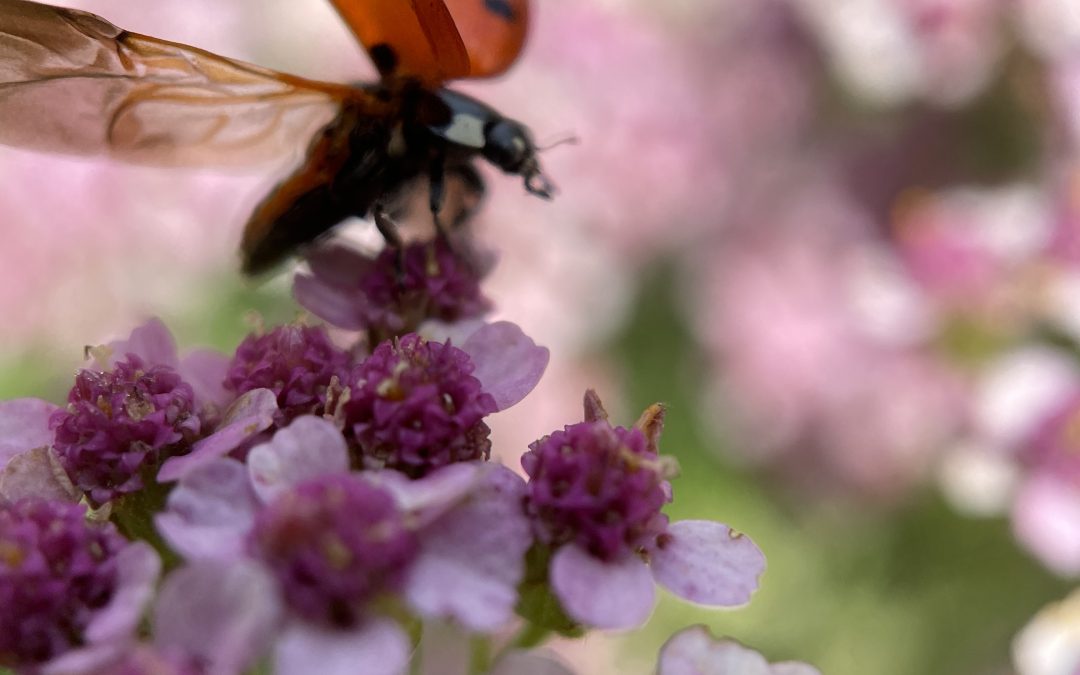By Fianna Dirks and Sarah Larsen
Photos by Fianna Dirks

A big headed ground beetle (Scarites subterraneus) found in a beetle bank.
Beetle banks are a type of non-crop habitat for beneficial ground-dwelling insects, such as predatory beetles, that can promote crop health. After observing the effects of wood chipped grassy areas in an orchard, EFAO member Fianna Dirks got curious about non-crop habitat for insects and came across the use of beetle banks, especially in Europe to help with pest control when there is loss of hedgerows.
In North America, there are examples of beetle banks in agroecosystems on the west coast of the United States but limited examples in the east or on small scale farmers or market gardens. In fact, the literature advised that beetle banks are only necessary at larger scales (20+ hectares). This advice didn’t match Fianna’s observation in the orchard.Working with the EFAO team, Fianna landed on the following research question:
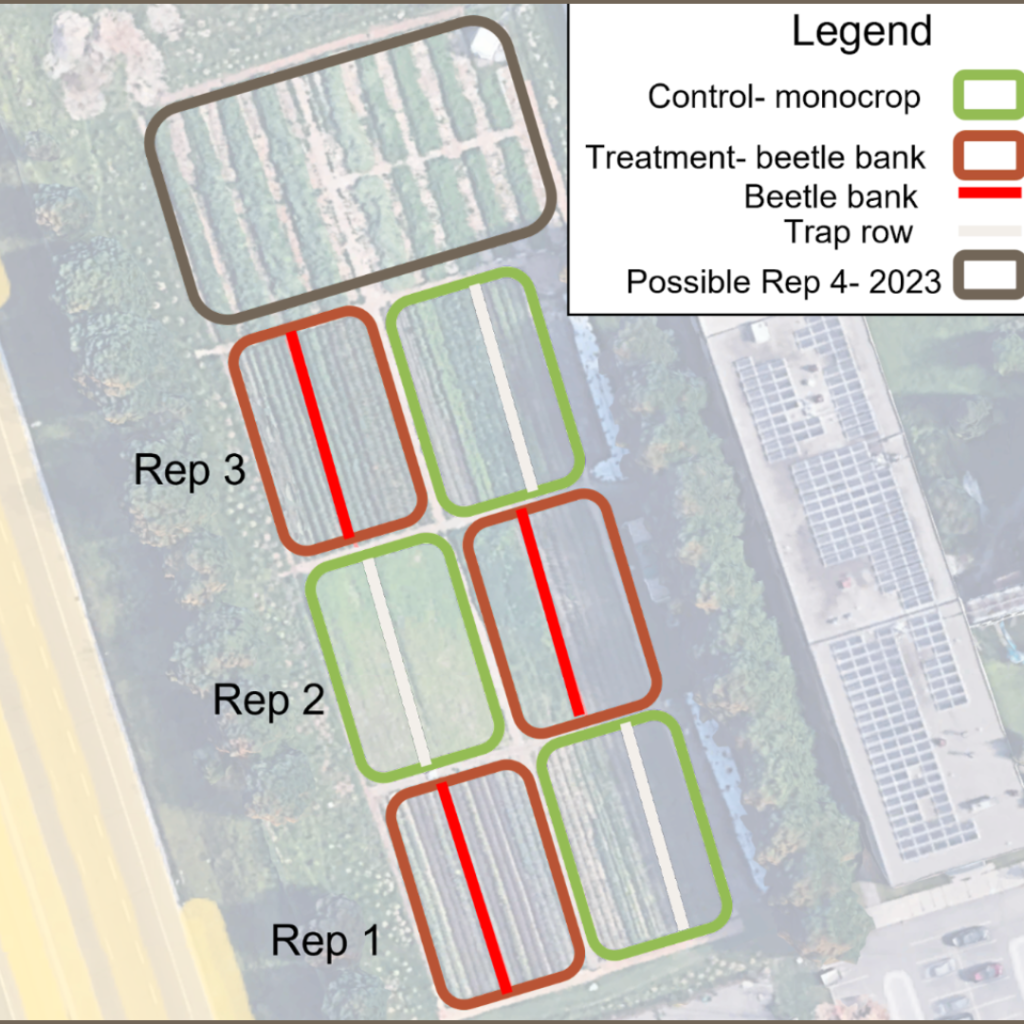
An aerial view of the gardens at FoodShare used for this beetle bank project. Garden areas where Fianna established beetle banks are in orange and areas that were mono cropped without beetle banks are in green. Red lines denote the location of the beetle bank within each plot; white lines denote the bed location of the cropped control beds.
Does incorporating managed beetle banks (i.e. non-crop habitat) into a small scale farm increase beneficial ground-dwelling insects such as predatory beetles, compared to monocropped beds?
Fianna set out to answer this question using research methods: she established three paired replicates of vegetable cash crops and beetle banks, as shown in this layout. Each of the six beds was 17’ x 4’, with 76’ between the beetle banks and the controls.
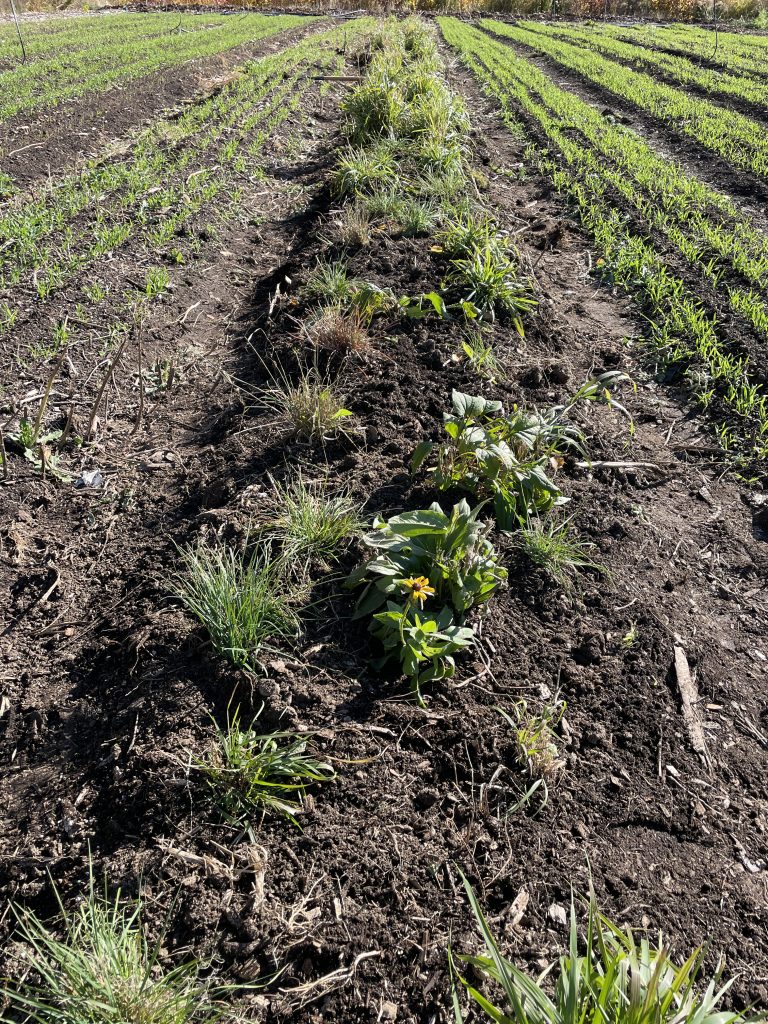
The beetle banks were first established in the fall of 2022, alongside a rye cover crop.
Fianna established the beetle banks by raising the soil of the banks using a rotary plow and then mulching thickly with a mix of mostly hardwood remedial mulch. They then transplanted a diverse species of plugs in 2 bed rows with 12” in row spacing.
They laid out the same trapping design for each of the six beds (three beetle banks; three mono-cropped control beds). This included four pitfall traps in the center of the 30” beds, at 20’ intervals starting at 20’ into the bed and ending at 80’.
 Each pitfall trap consisted of two solo cups or other similar cups placed within each other. (The second cup allowed for easier extraction.) Fianna filled cup 2 (the inner cup) with a pitfall solution consisting of ethyl alcohol , and then covered the cup with a paper plate held up by skewers to minimize rain and other debris from falling in the cup.
Each pitfall trap consisted of two solo cups or other similar cups placed within each other. (The second cup allowed for easier extraction.) Fianna filled cup 2 (the inner cup) with a pitfall solution consisting of ethyl alcohol , and then covered the cup with a paper plate held up by skewers to minimize rain and other debris from falling in the cup.
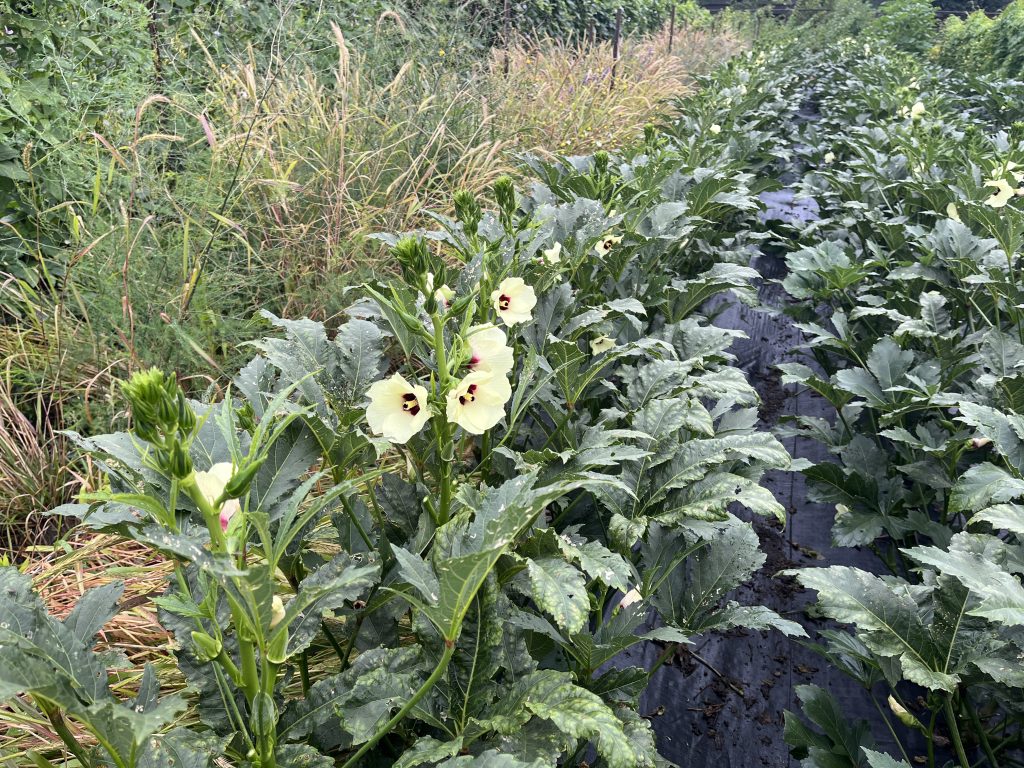
The same beetle bank, one year later, in 2023.
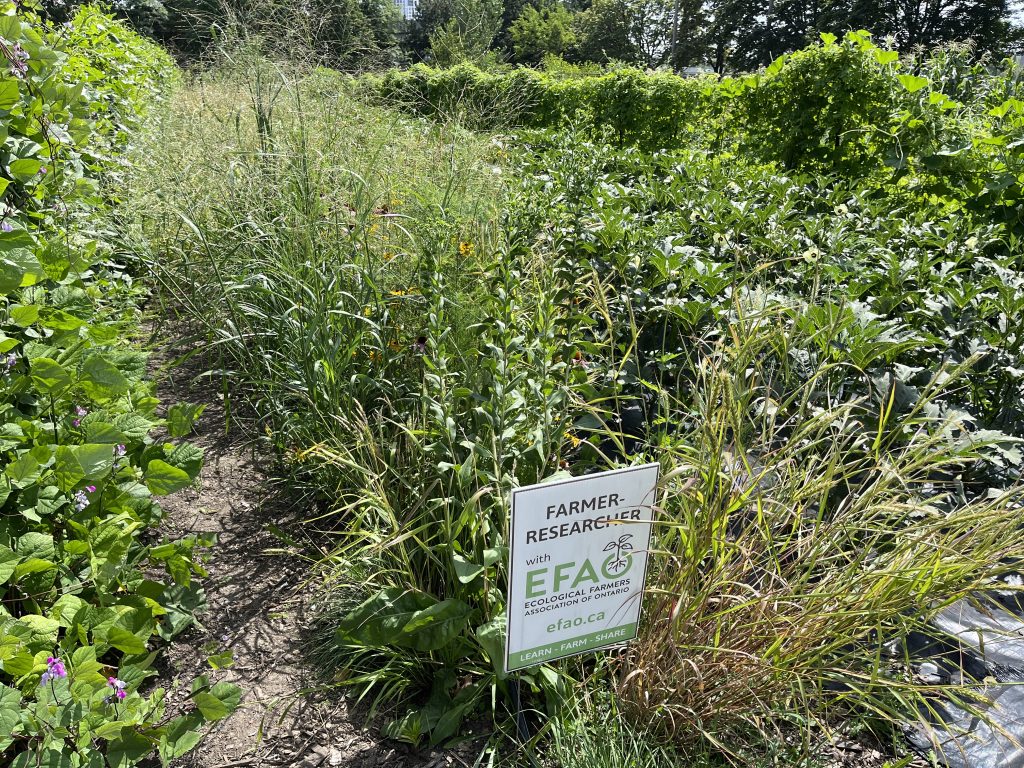
The same beetle bank again, in 2023.
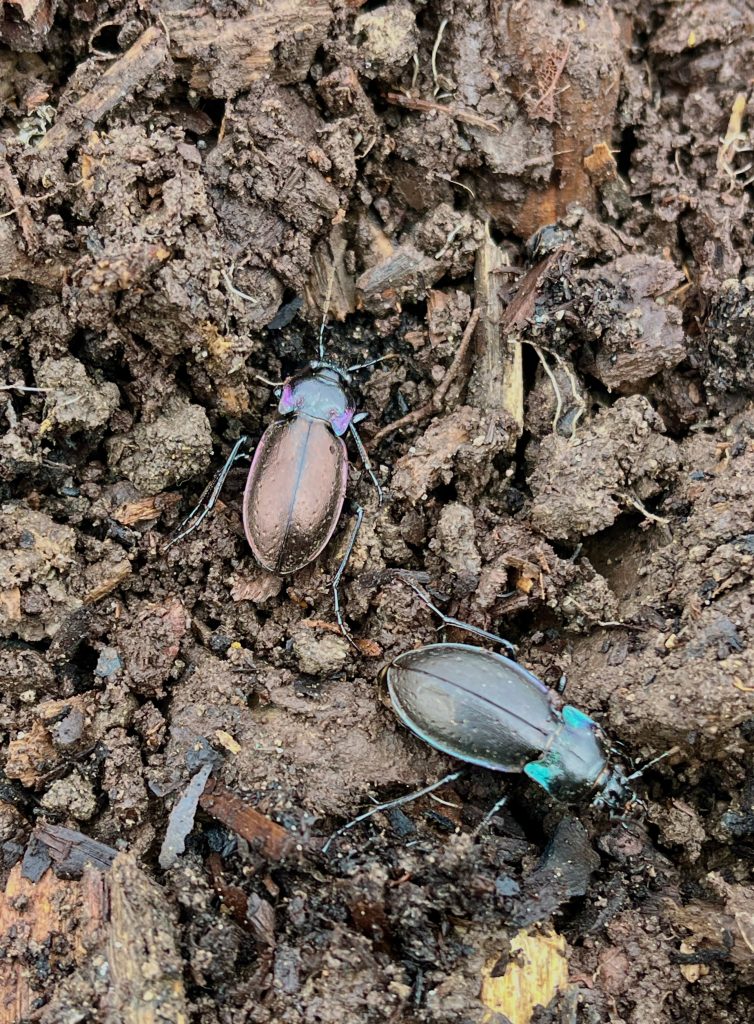
Two bronze ground beetles (Carabus nemoralis) making a run for it. Ground beetles are hard to find and even harder to photograph!
In 2022, Fianna trapped the first week of August and October. In 2023, they trapped the first week of June, August and October 2023.
Fianna found the same type of ground beetles in the beetle banks and cropped beds, and significantly more ground beetles in beetle banks than cropped areas.
This is similar to longer-term studies that observed polyphagous predator densities in the beetle bank were similar to or greater than those in the conventional hedge banks or fields.
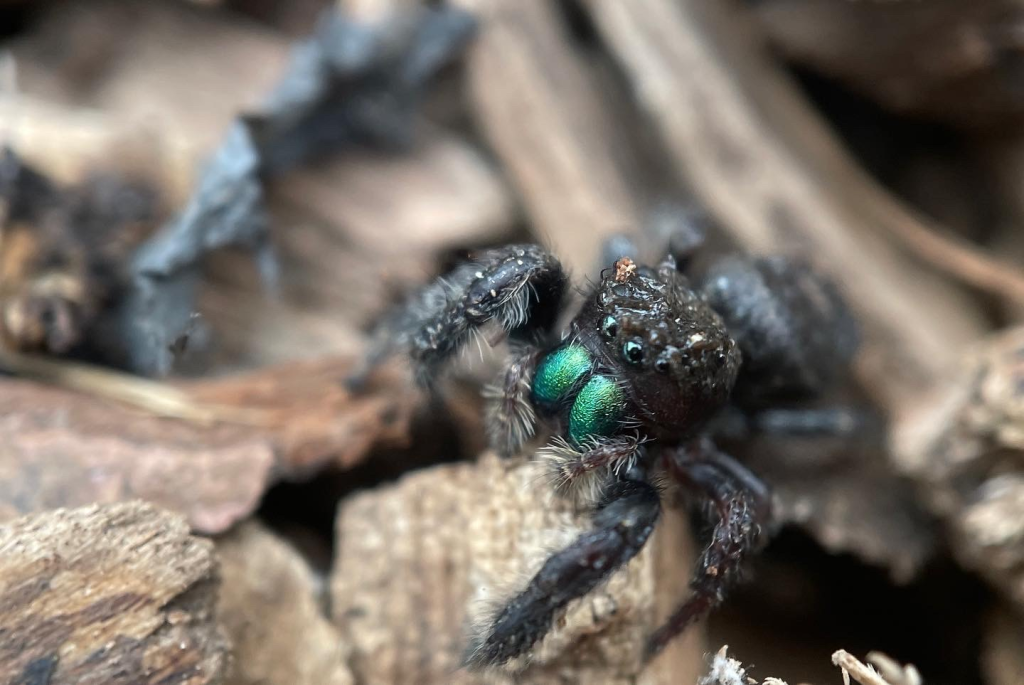
A bold jumping spider (Phidippus audax) found in a beetle bank.
In addition to the ground beetles, Fianna observed numerous other beneficial insects in beetle banks that were not present in the cropped areas.
While they are non-crop habitat, Fianna found that beetle banks provided some market opportunities including harvesting the native grasses as fillers for flower bouquets, and mushrooms produced from the wood chips inoculated with wine cap mushroom spores. A downside to beetle banks is they can provide overwintering habitat for voles.
When planning a layout that includes beetle banks, larger path sizes (24”) are recommended because grasses can grow quite large and encroach on production beds near beetle banks.
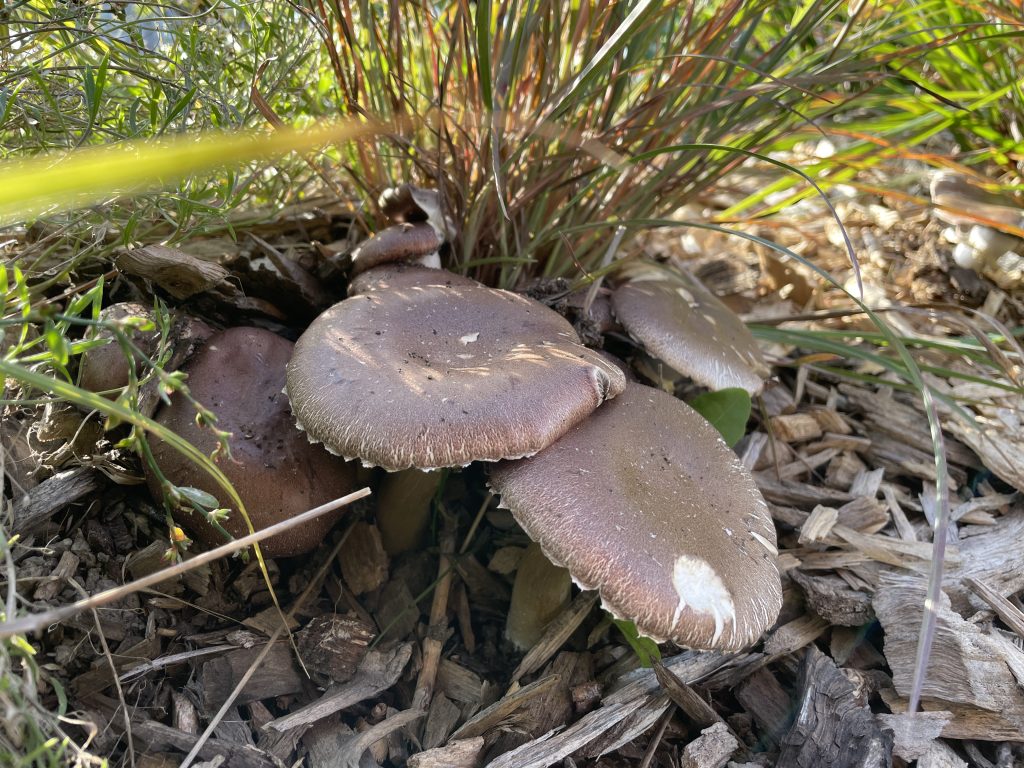
Wine cap mushroom (Stropharia rugosoannulata) flushes growing from inoculated wood chips used in the beetle bank. The bases of the grasses offer a shaded environment for them to grow.
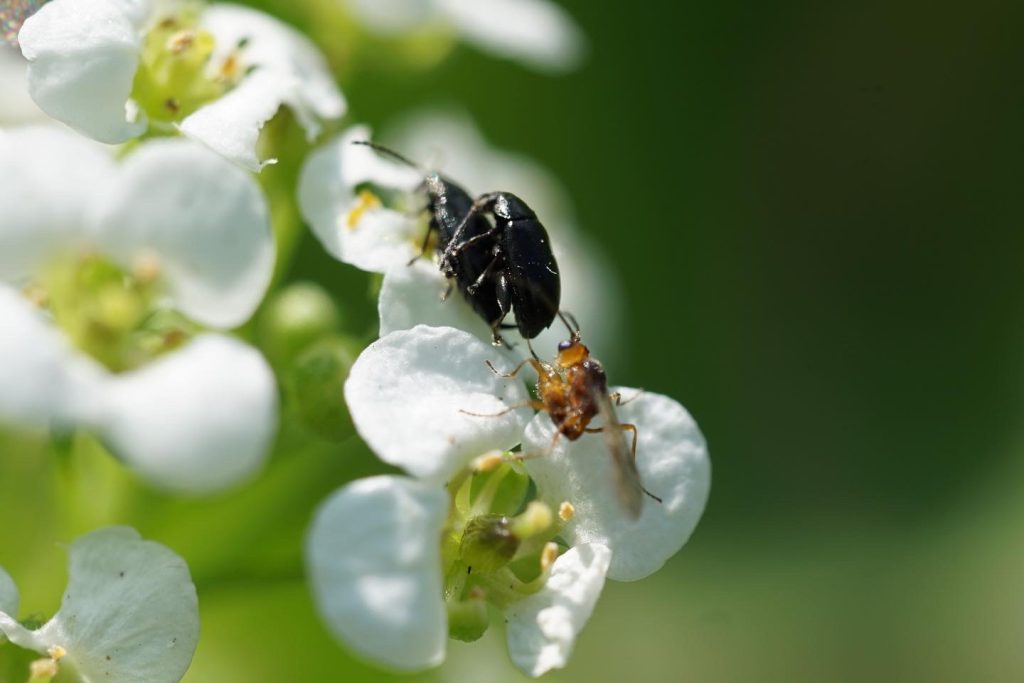
A parasitoid wasp laying eggs on mating flea beetles in bed adjacent to beetle habitat.

Ambush bugs on swamp milkweed — one of the flower species making up a diverse beetle bank habitat.
The take home message?
Beetle banks can be an effective way to increase ground beetles for market gardens, in turn possibly reducing weed and pest pressures.
And, seeing beetle population differences in field blocks only 76’ away suggests that more species-specific habitats on smaller farms could increase beneficial insect numbers.
Fianna Dirks runs It’s Giving Farm with Ekow Stone on 7 acres in the northern tip of Rouge National Urban Park, in Altona ON. She has been working as a farmer for the last 13 years focusing on organic growing, on-farm compost production, and beneficial insect habitat creation.
Sarah Larsen is EFAO’s Research & Small Grains Program Director and also supports soil health components of EFAO’s education programs. She holds a Ph.D. in Soil Microbial Ecology from Iowa State University, and along with her partner and their daughter, tends the land that they call Three Ridges Ecological Farm near Aylmer, Ontario.

